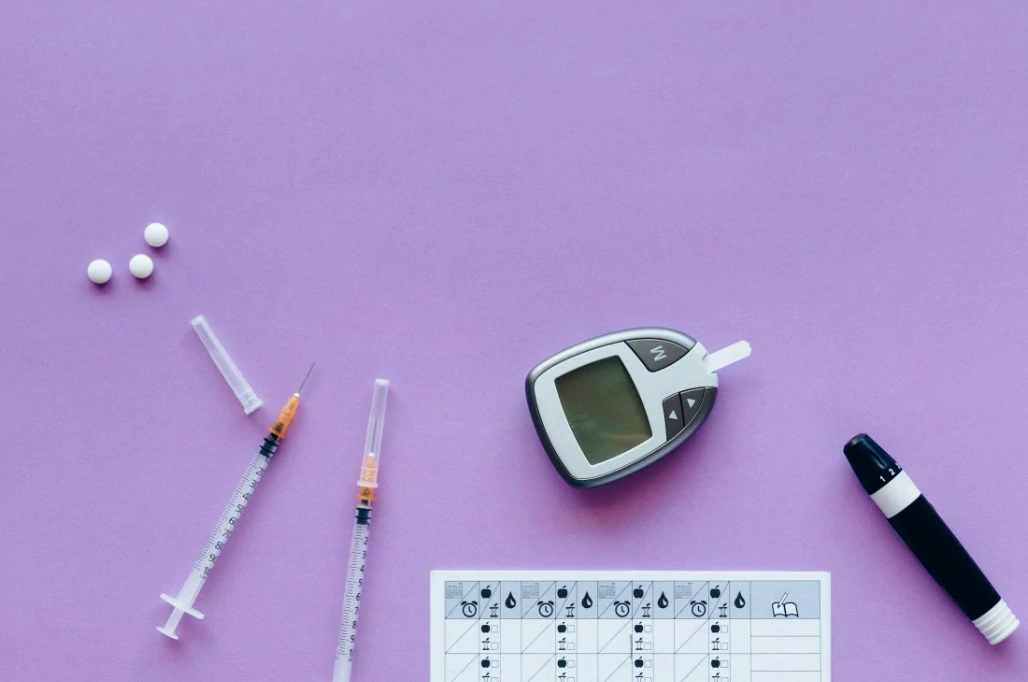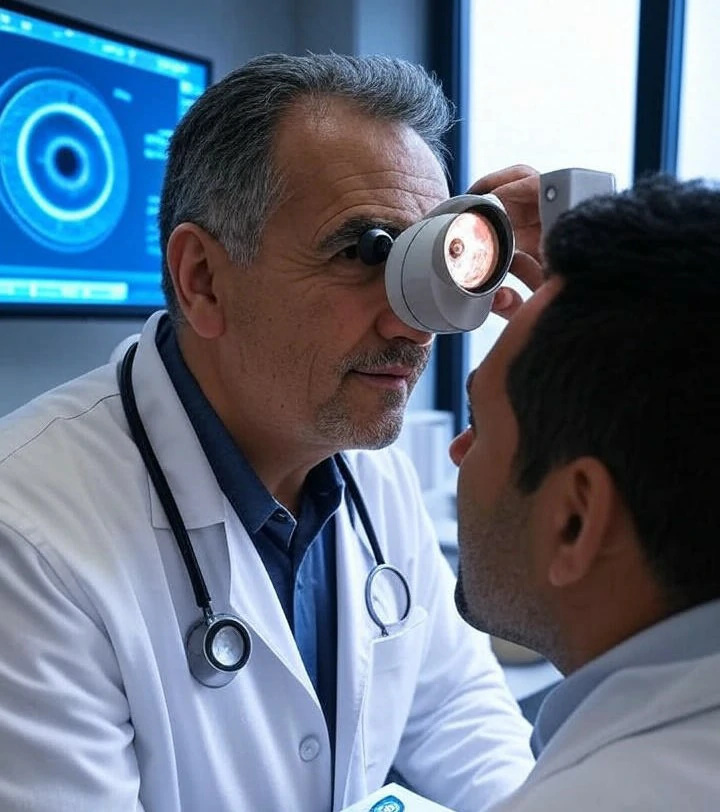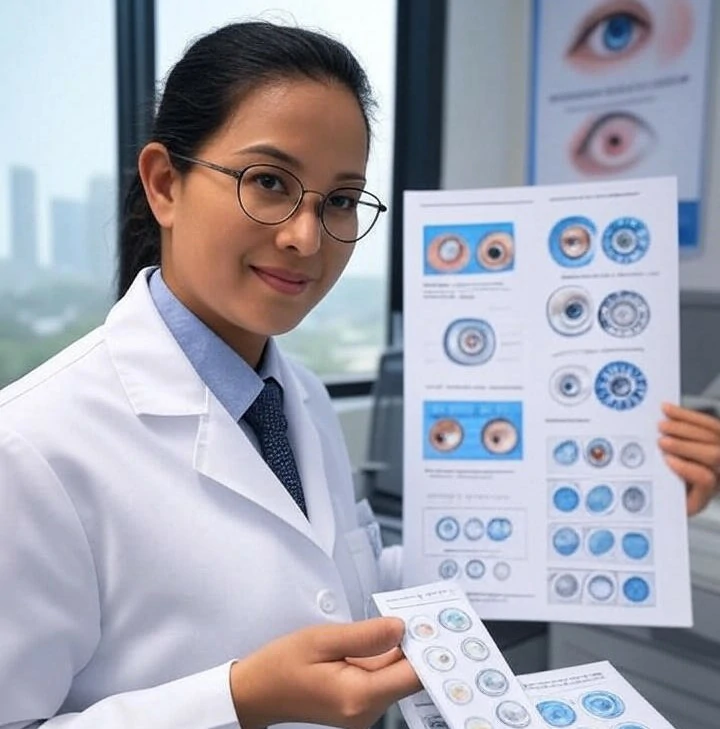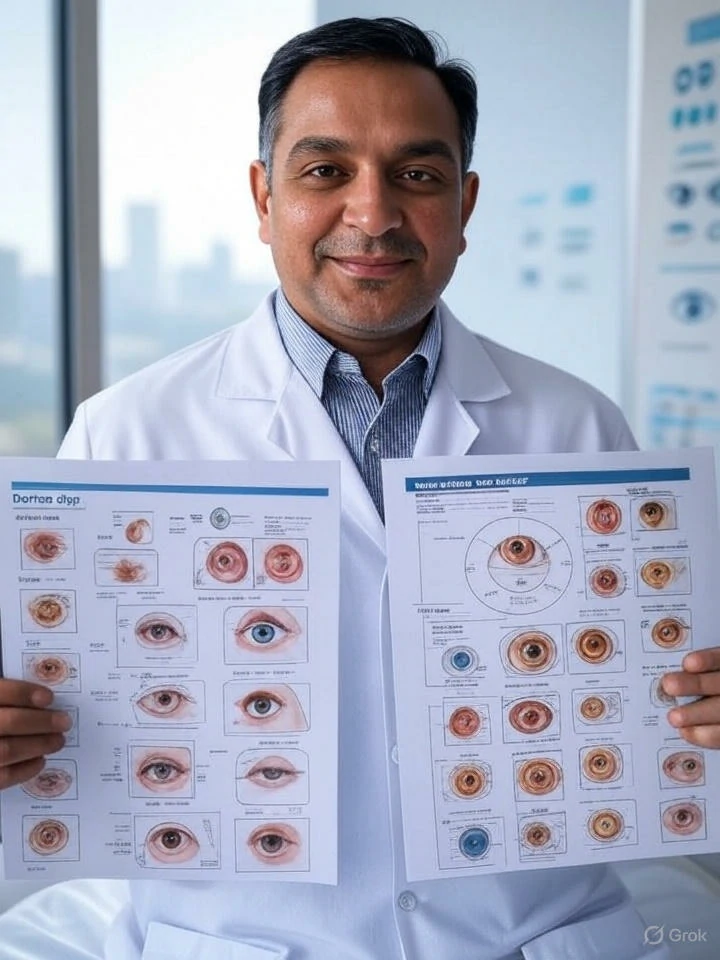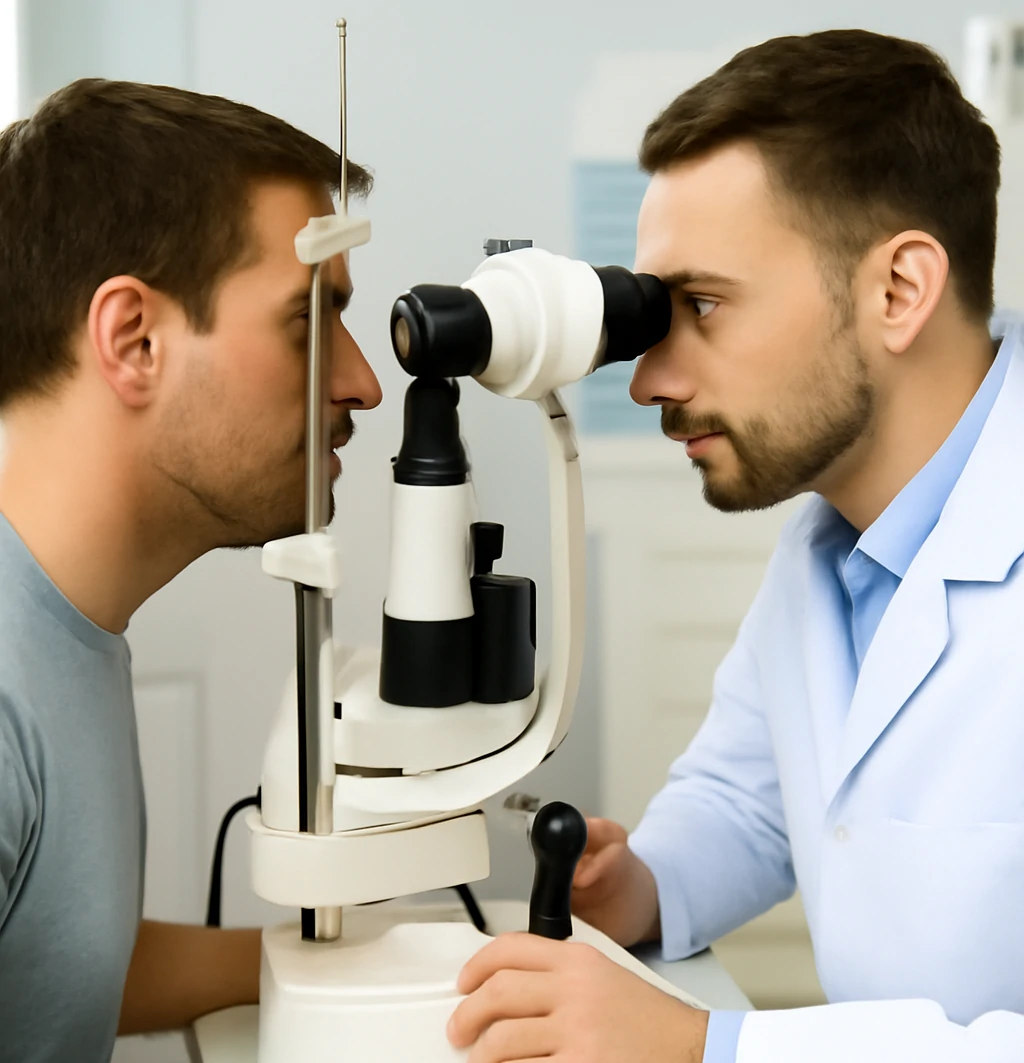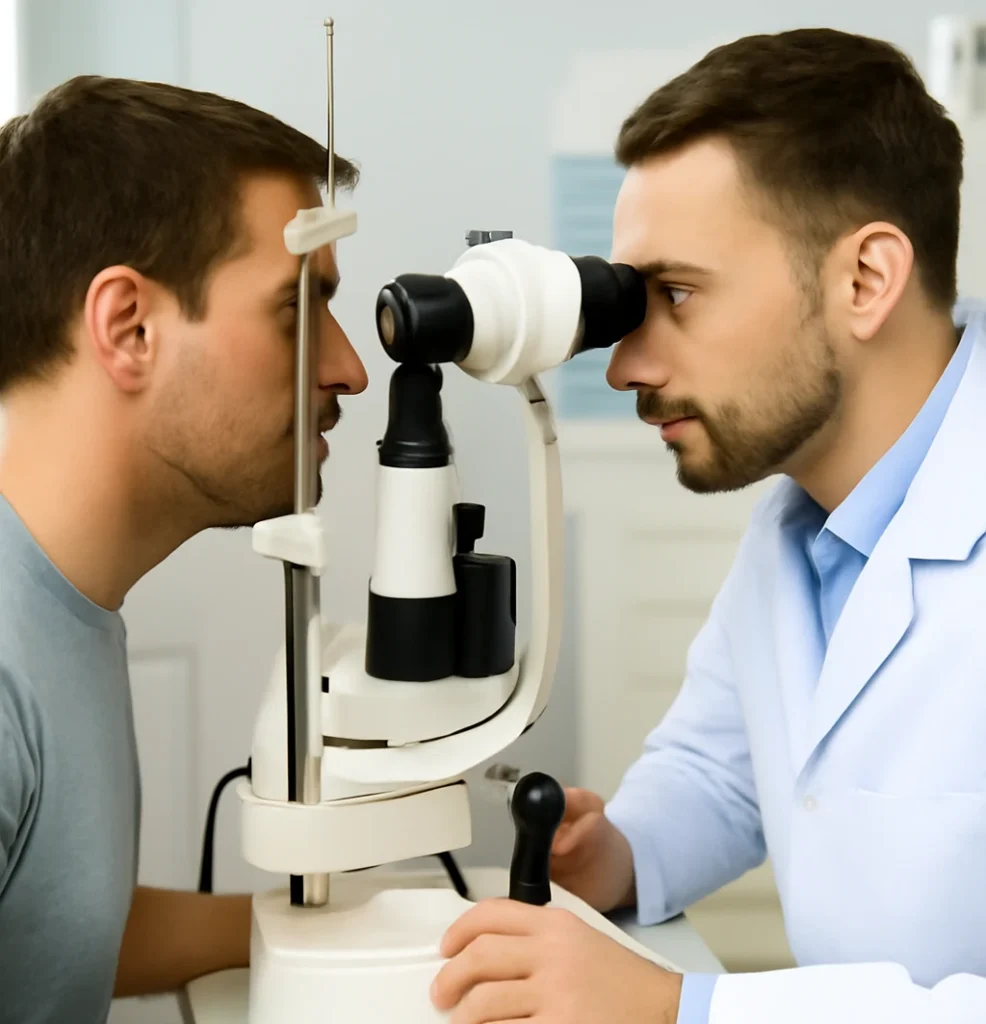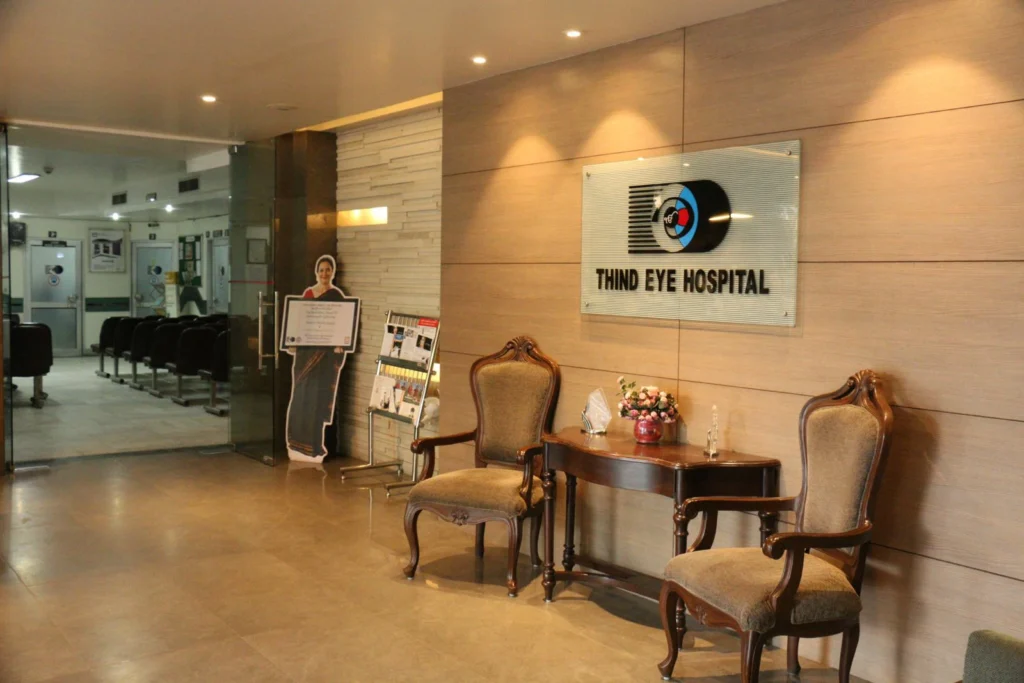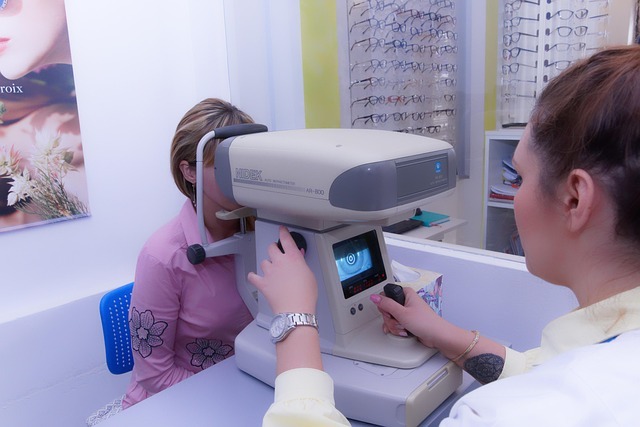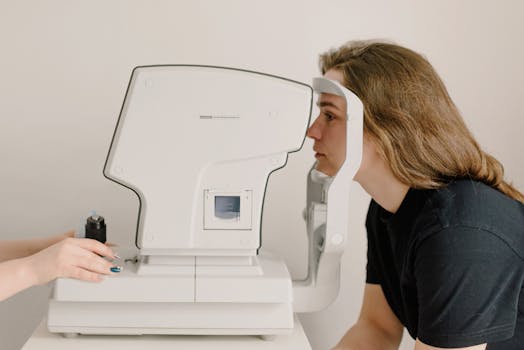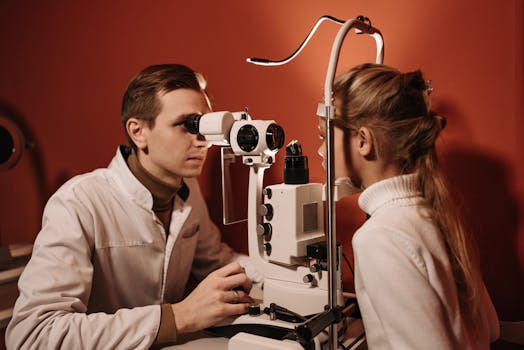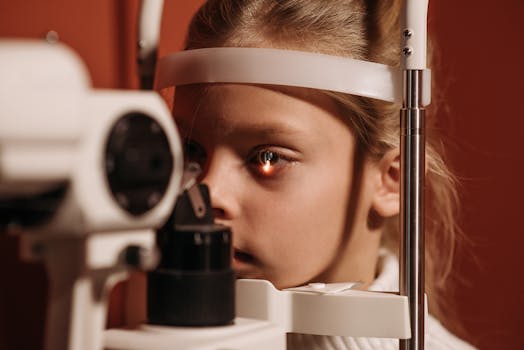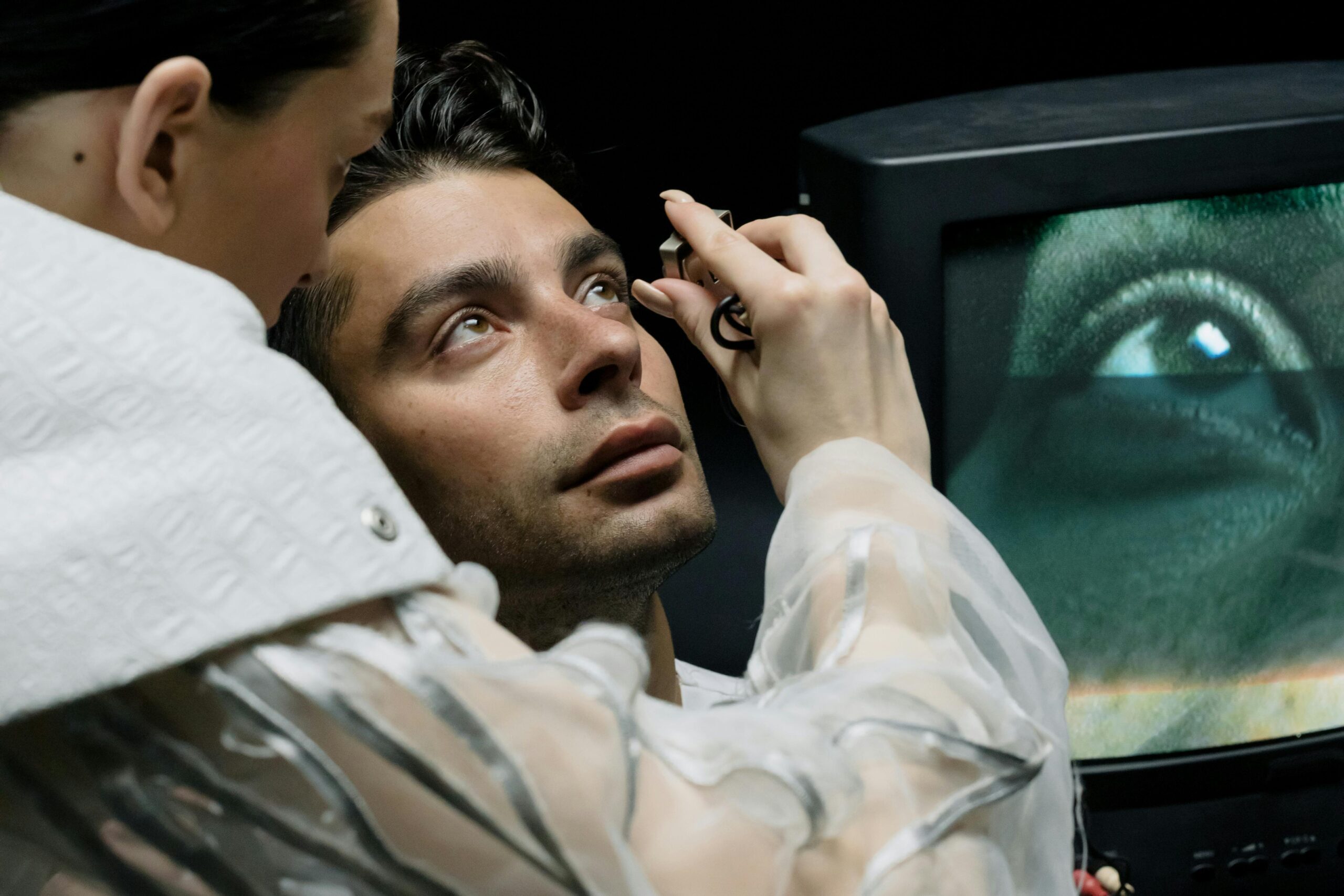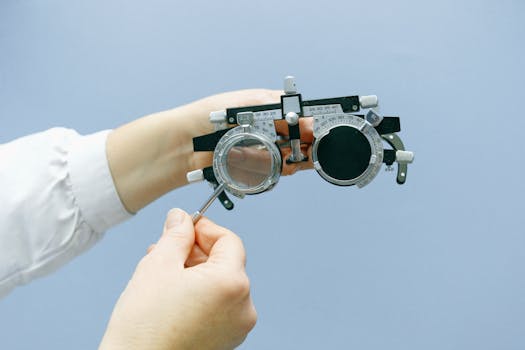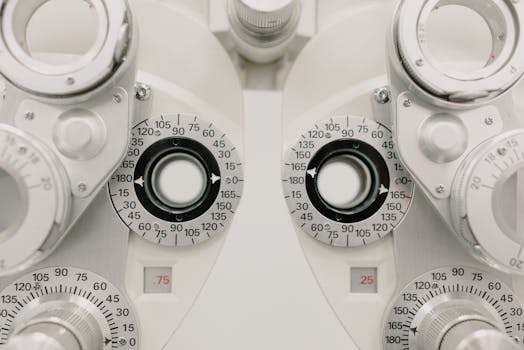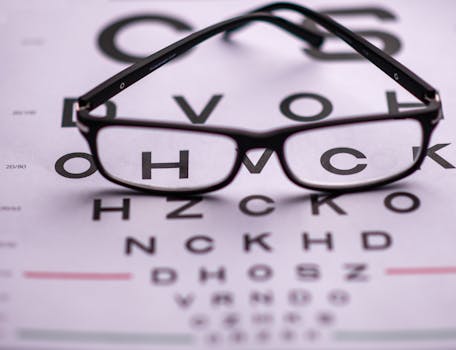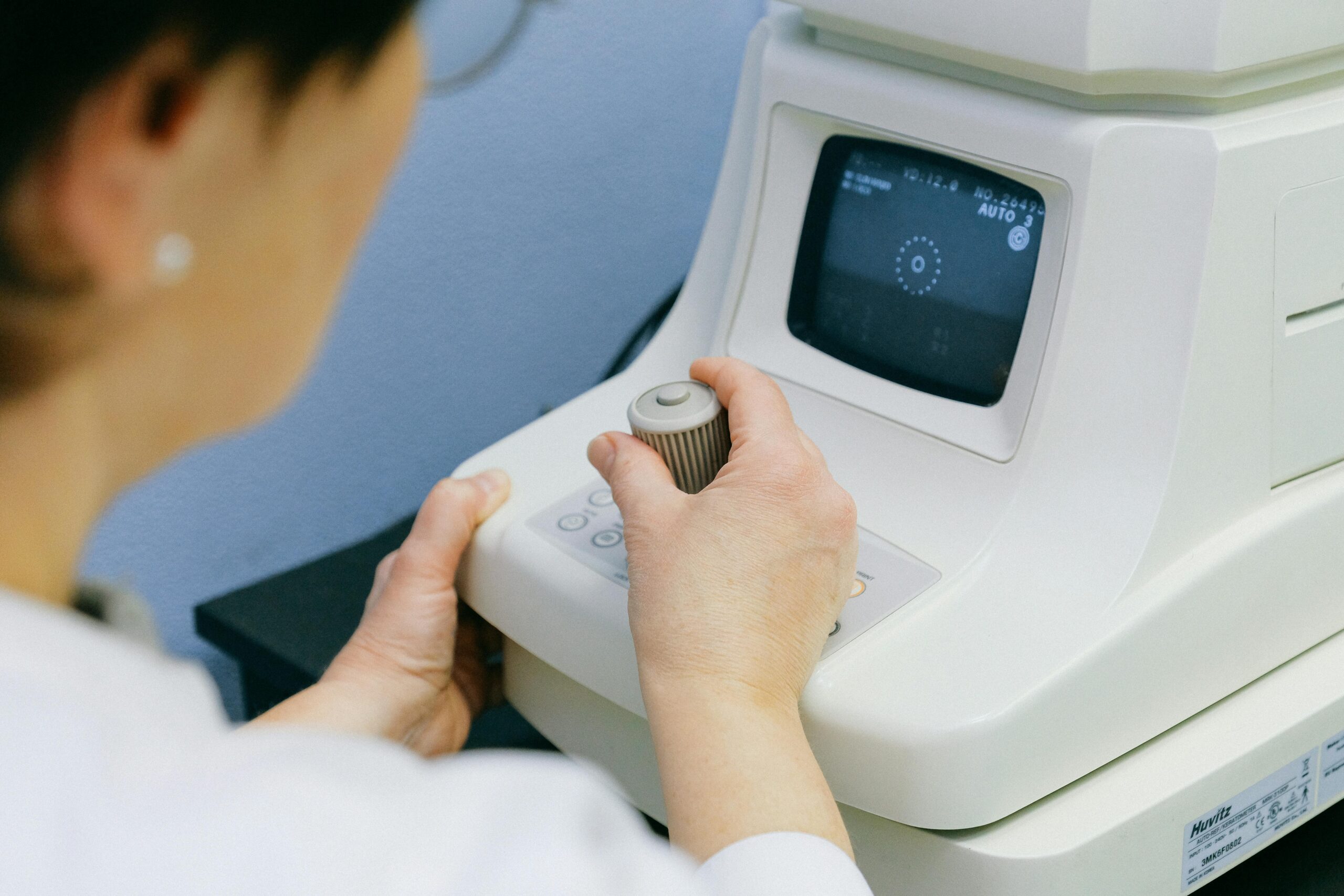In today’s digital-first workplace, spending 8 to 10 hours a day in front of screens has become a necessity, but it comes at a cost. Millions of office workers worldwide are now experiencing the effects of Computer Vision Syndrome (CVS), also known as Digital Eye Strain. This condition affects not only productivity but also long-term eye health, making it a serious public health issue.
At Thind Eye Hospital, recognized as the Best Eye Hospital in Jalandhar, our team of qualified ophthalmologists and vision specialists frequently diagnose and treat individuals suffering from Computer Vision Syndrome. This comprehensive guide will help you understand CVS, its causes, symptoms, prevention, and treatment options backed by medical expertise.

What Is Computer Vision Syndrome?
Computer Vision Syndrome is a group of eye- and vision-related problems that result from prolonged use of digital screens such as computers, tablets, smartphones, and e-readers. According to the American Optometric Association, individuals who use screens for more than two hours at a stretch are particularly vulnerable to CVS.
Common Symptoms of Computer Vision Syndrome
If you spend long hours on digital devices and experience any of the following symptoms, you may be dealing with digital eye strain:
- Blurry or double vision
- Eye fatigue or soreness
- Headaches, especially in the temples
- Dry or watery eyes
- Neck, shoulder, or back pain
- Difficulty focusing on screen text
- Light sensitivity
Ignoring these symptoms could lead to chronic vision problems or even irreversible damage if left untreated.
Why Does CVS Happen? The Science Behind Digital Eye Strain
CVS occurs due to a combination of environmental and physiological factors, such as:
- Reduced Blink Rate: People blink 50% less while staring at screens, which causes dryness and irritation.
- Improper Posture or Viewing Angles: Sitting too close or far from your screen strains your focusing muscles.
- Blue Light Emission: Digital screens emit blue light, which disrupts sleep cycles and strains the retina.
- Uncorrected Vision Issues: Even mild refractive errors can lead to severe eye strain over time.
- Glare and Lighting: Excessive screen glare or poor ambient lighting increases eye muscle workload.
How to Prevent Computer Vision Syndrome at Work
Our expert team at Thind Eye Hospital has outlined effective, science-backed strategies to reduce CVS symptoms:
1. Adopt the 20-20-20 Rule
Every 20 minutes, look at something 20 feet away for at least 20 seconds. This allows your eye muscles to relax and reset.
2. Use Blue Light Protection
Digital screens emit harmful blue light. Invest in blue light-blocking lenses available at Thind Eye Hospital’s Optical Store, or install software like f.lux or enable night mode on your devices.
3. Schedule an Eye Doctor Appointment
Regular eye exams are essential, especially if you work with screens daily. Visit our eye care clinic in Jalandhar to ensure your prescription is optimized for screen use. Our ophthalmologists may also recommend digital glasses or vision therapy.
4. Blink More Often:
Make a conscious effort to blink more often to keep your eyes lubricated. This simple habit reduces dry eye symptoms dramatically.
Ergonomic Adjustments to Protect Eye Health
Creating an ergonomically friendly workstation can significantly reduce your CVS symptoms:
- Screen Position: Keep your monitor 20 to 24 inches away and slightly below eye level.
- Lighting: Use soft, indirect lighting and avoid screen glare by adjusting blinds or adding an anti-glare filter.
- Text and Contrast: Increase font size and contrast to avoid squinting.
- Chair Support: Proper posture reduces musculoskeletal strain, indirectly improving eye comfort.
Nutrition and Hydration for Eye Health
The eyes are complex organs that depend on proper nourishment and hydration. To support long-term vision health:
- Eat foods rich in Vitamin A (carrots, spinach), Vitamin E (almonds, sunflower seeds), Lutein and Zeaxanthin (kale, corn), and Omega-3 fatty acids (salmon, flaxseeds).
- Drink plenty of water, especially in air-conditioned environments that can dehydrate your eyes.
When Should You See an Eye Specialist?
If symptoms like dry eyes, blurred vision, or persistent headaches don’t improve with self-care, consult a certified eye specialist near you. Early intervention can prevent conditions like chronic dry eye, refractive errors, or even macular stress due to prolonged digital use.
At Thind Eye Hospital, our eye care professionals use the latest diagnostic tools and individualized treatment plans to address all aspects of digital eye strain.
Why Thind Eye Hospital is Your Best Choice for Digital Eye Strain Relief
Located in the heart of Punjab, Thind Eye Hospital is trusted by thousands for its holistic approach to eye care. Here’s why:
- Recognized as the Best Eye Hospital in Jalandhar
- Team of Certified Ophthalmologists and Retina Experts
- In-house Optical Store with Blue Light Glasses
- State-of-the-art Diagnostic and Treatment Facilities
- Customized Solutions for Screen Users and Professionals
Final Word: Protect Your Vision Before It’s Too Late
Digital screens are here to stay, but Computer Vision Syndrome doesn’t have to be. By making informed choices, practicing simple habits, and consulting with certified professionals, you can preserve your eye health for the long run.
Whether you’re looking for preventive advice or need expert treatment, Thind Eye Hospital is your go-to destination for all eye-related concerns.
Book your appointment with the best eye care clinic in Jalandhar today. Get relief from digital eye strain with personalized solutions, cutting-edge technology, and professional care.
5 Most Important FAQs About Computer Vision Syndrome
1. What is the main cause of Computer Vision Syndrome?
CVS is mainly caused by prolonged exposure to digital screens, which reduces blinking and strains the eye muscles due to continuous focusing.
2. Can Computer Vision Syndrome damage your eyes permanently?
While CVS itself is not permanently damaging, prolonged symptoms may lead to chronic conditions if left untreated.
3. How can I tell if I have digital eye strain?
If you frequently experience headaches, blurry vision, dry eyes, or eye fatigue after screen use, you may have CVS.
4. Do blue light glasses help with CVS?
Yes. Blue light-blocking glasses can reduce glare and improve comfort during prolonged screen use, especially in low-light settings.
5. How often should I get my eyes checked if I work on a computer daily?
If you work on screens daily, it’s recommended to get a comprehensive eye exam once every year, or more frequently if symptoms persist.


